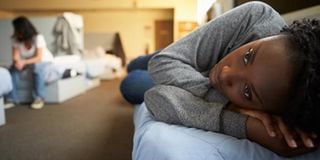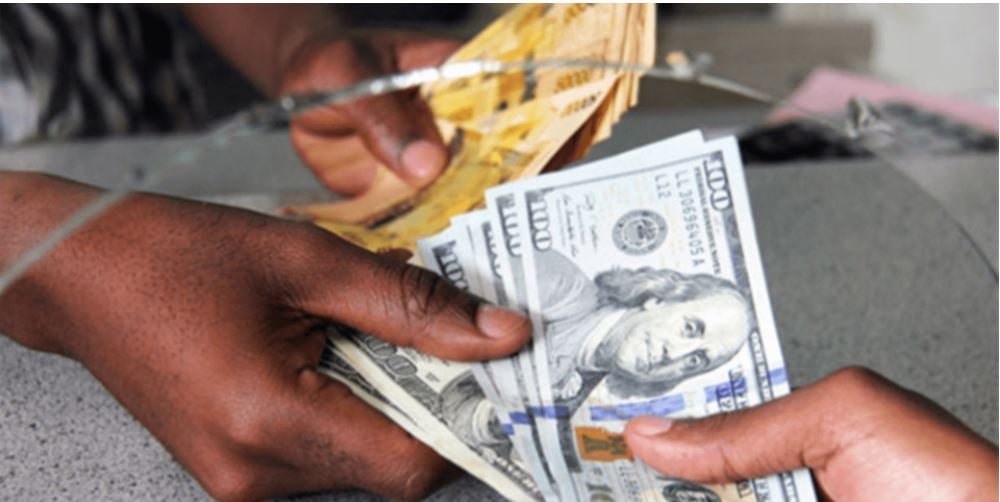Prime
Nakato’s plight of endless endometriosis pain

Nakato wishes she could be pain free and take care of herself. PHOTO/internet
What you need to know:
Stella Nakato has lived with endometriosis, a disorder in which tissue that normally lines the uterus grows outside the uterus. She shares her pain and resilience with Beatrice Nakibuuka.
“Ask your doctor, “When will this disease go, if not, when will you die?” Stella Nakato re-echoes these words that seem to drain her emotionally. These words hurt because they were coming from her relatives who were footing her hospital bills.
One day she got up from a coma and her relatives had bought a coffin for her. The machines in the ICU had shown a flat line but the doctors had told them to wait a little longer.
“I had been unconscious for four days and the doctors had done everything to save my life but in vain. When I woke up, some of my relatives told me to ask the doctor the type of illness I have, what treatment exists for it and if there is no treatment, when I would die,” she recalls with teary eyes.
During the interview, she keeps turning and seems uncomfortable while sitting. She keeps holding the right side of her abdomen. Sometimes she sits at an incline and then lays on her stomach. She gets episodes of pain and her jerrycan of hot water is right near her.
She speaks in a sad, low, but serious tone. When I asked her if I would return for the interview another day, she convinced me to carry on because this was normal daily pain.
In 2015, whenever she went to hospital, she was diagnosed and treated for Urinary Tract Infections (UTIs). She would take her medicine as prescribed but was not getting any better.
A primary school teacher, Nakato spent all her money earned to treat infections and Pelvic Inflammatory disease. She would get big blood clots even when she was not in her periods and severe pain before, during and after her periods as well as coughing blood.
“I earned Shs150,000 per month which I saved for three months before going to Doctor’s plaza in Kabalagala where I met a gynaecologist who gave me treatment for an infection and advised that I return if there was no change,” Nakato recalls.
She returned to the hospital and the doctor ruled out a pelvic inflammatory disease. The medication was a two phase prescription which she religiously followed but she still got the pain. The gynaecologist then recommended surgery to see what exactly was wrong with her.
Another gynaecologist carried out the surgery with a hope that she would get a solution to her pain.
The big discussion
“The doctor said that everything in my abdomen was messed up and that there was nothing he would do about my situation so he stitched me up,” she says, adding, “From the complications that the doctor had seen in my abdomen, a council of doctors after a discussion said that my uterus and ovaries had to be removed but they needed my consent and made a decision with some of my family members. I was told that my ovaries could be preserved and avail them when I needed them but at a cost.”
However, the doctors told her that removing these organs would not stop the pain and she did not have the money that was needed to preserve the eggs. She still needed a chance to be able to conceive and have her own children. She declined this idea and went back to work.
“The pain persisted. I feel the pain coming. It starts in my lower belly, spreads to the back then moves up the spine to the brain. This is the point at which I get a black out. I do not have the words that explain the kind of pain I go through. Many times, I wake up in hospital not knowing how I got there,” she shares.
After repeated blackouts and fainting in 2016, she was again taken to Nsambya Hospital where the doctor said she had multiple fibroids and was operated to remove the big ones while the small ones remained.
This was the second surgery
She got a little relief from the pain for a few months and thereafter, she got very severe and frequent pain that she was referred to Makindye Hospice. Here she was availed oral morphine that would help manage her pain.
Morphine is the last painkiller given to a person with chronic pain and is about to die and it is meant to be used for a short time. She would sometimes forget to take the drug in the right frequency all the time she got some relief and when the pain returned, she would take excess.
“The pain was too much and I would feel it whenever it was about to start,” Nakato recalls.
Then came the addiction
“I was told to take 5ml of the morphine before the pain starts depending on the frequency of the pain but after every two hours, it would come. I was forced to take more than what I was prescribed to take and still the pain would stay. I became an addict in that if I did not take it, I would start shivering. I was like a mad person and the doctor at Nsambya referred me to Butabika,” she recounts.
She spent three months at the mental hospital and there, she gradually was helped to fight the addiction since doctors treat addiction to morphine in the category of drug addiction.
“This did not mean that the pain stopped because the cause of the pain was not removed but I learnt to train my body to only take the pain killer in the most severe pain. It is more like being taught to endure pain. But this pain cannot be borne. It is a pain that causes one to sweat even during cold weather and sometimes you wish you could just die,” Nakato shares grimly.
In 2018, she vomited blood and the doctor at Nsambya Hospital recommended another surgery into the abdomen to find the cause for this. It was thought that she had cancer but the results revealed that she had stage IV endometriosis.
She was hurt that all along, she had not got proper diagnosis but also that she cannot get a solution even after diagnosis. She has to endure this horrific pain until she undergoes a surgery to remove the endometrial cells that spilled out of the uterus.
She has two five-litre jerrycans that she purposed to use whenever she gets the cramps since she cannot afford the rubber bottles that are usually recommended.
“I use one jerrycan for the lower abdomen and another for the lower back. This is the only way I can find sleep. I do not even wrap the jerrycans with a cloth as recommended. The pain is too much compared to the burn that I get from a direct contact with a jerrycan of hot water,” she shares.
When she went for review two weeks ago, she was told that her right ovary was enlarged and that is the reason she feels pain in the right lower abdomen. If the surgery is done, she would get some relief from this chronic pain and also slightly increase her chances of conceiving although there is no surety about this.
Relief from an unexpected source
During the second surgery, she met with Grace Nagawa, the founder Endometriosis Foundation Uganda who also suffers from the same condition. This was a great relief for her because she did not know anyone like her and because some of her relatives were already tired of footing her hospital bills. She had hated herself too.
“My relatives kept asking me what type of disease I was suffering from because they did not know anyone in our family who had it. I also got frustrated seeing that there was no ideal treatment for the ailment that I had and it was draining me emotionally and my family financially. When I met Nagawa she shared with me what she was going through and I realised I was not alone.”
From the encounter with Nagawa, she changed her diet to exclude all dairy products, red meats, sweet beverages and wheat based foods. From this, she is able to get a little relief from the pain but wishes she could be productive.
“I wish I could be pain free and take care of myself. I even quit my job because I am in pain all the time. I cannot work and yet I need money. I was told that I need surgery but the doctors in Uganda cannot manage my condition,” she says.
She has to travel to Kenya where surgery is likely to cost me about Shs40m.
“But I even do not know where to start from. I have been drained financially and have engaged all relatives I could think about. I do not know where else to go for support,” she pleads.
How it started
As an adolescent, when Nakato started having her menstruation period.
Then, diclorofenac had just been introduced on the market and she would take several tablets to relieve the pain but still she would not go to school because of the pain and vomiting that accompanied the period. There are times she missed her periods and she would be very happy because then she would be able to attend school for as long as she did not get the period and the pain associated with them. Many people would tell her that she would stabilise when she grows older or after giving birth. As a teenager, life was not easy for her when she lost her mother.
“I did not know much about my father so after my mother’s demise; I lived at my maternal uncle’s place that only had boys so I was not free to share with him what I was going through.”
She has lived with this pain since she turned 13 years.
Endometriosis. A disorder in which tissue that normally lines the uterus grows outside the uterus. With endometriosis, the tissue can be found on the ovaries, fallopian tubes or the intestines.
The most common symptoms are pain and menstrual irregularities. Effective treatments, such as hormones and excision surgery, are available.




